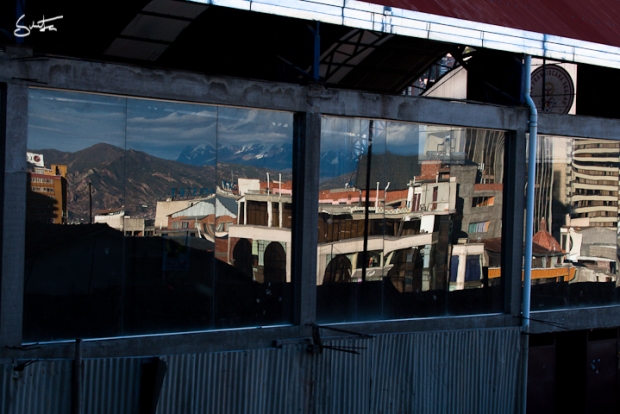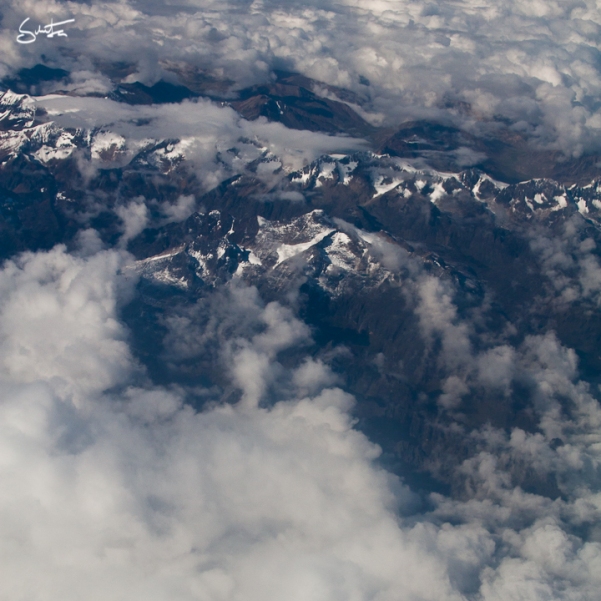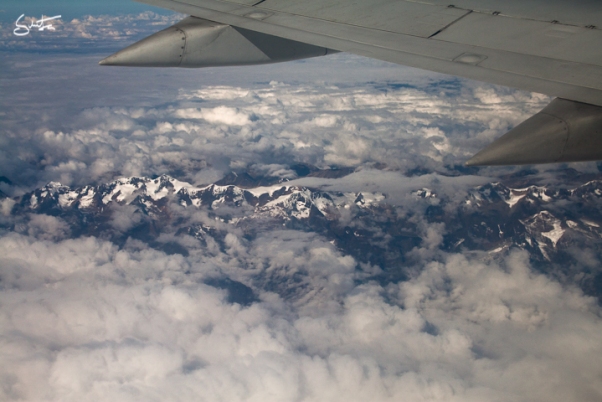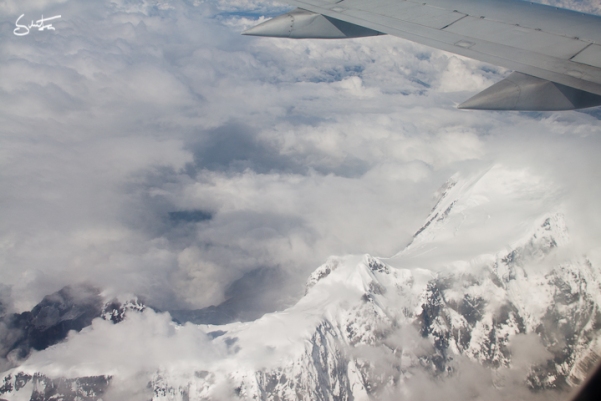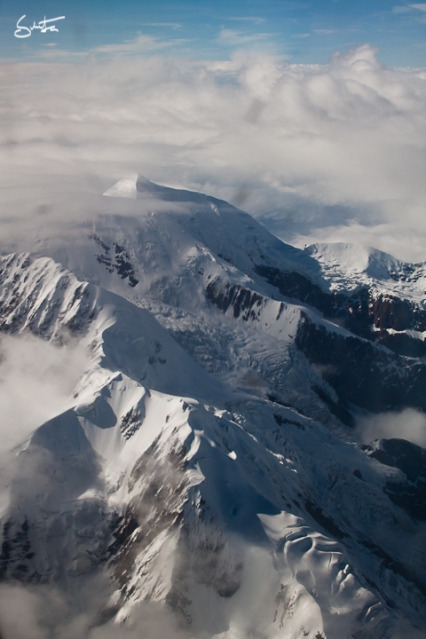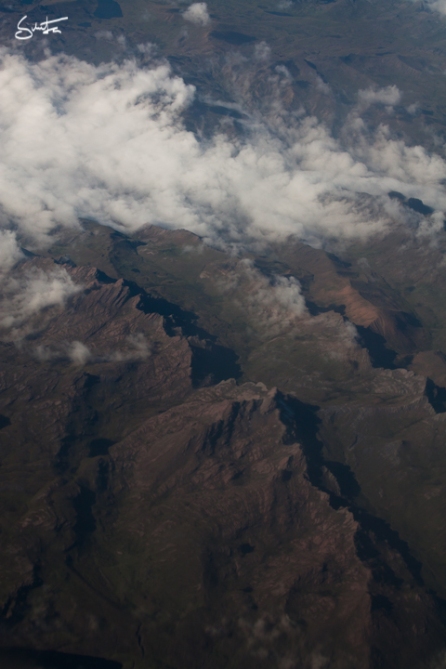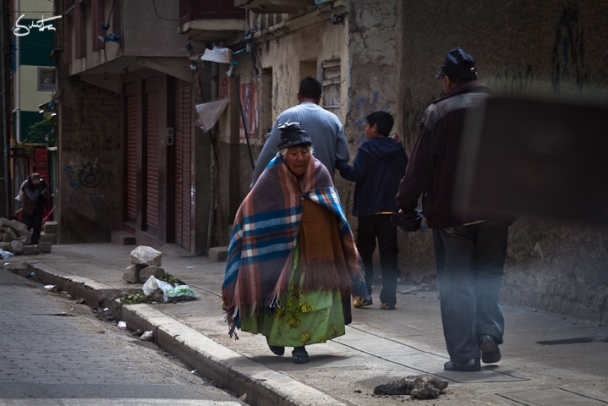Czwartek byl dla nas Dniem Muzeum, poniewaz Wielki Piatek jest w Boliwii dniem wolnym od pracy (takze tej w muzeum:), a w weekendy wszystko jest tutaj zamkniete.
Jako pierwsze odwiedzilismy muzeum przy kosciele Swietego Franciszka, ktore miescilo sie tuz za rogiem naszego hotelu, w poblizu ‘Mercado de las Brujas‘. Kosciol i zakon ufundowany w roku 1548 zachowal sie do czasow dzisiejszych w bardzo dobrym stanie (choc znalazlam informacje, ze zostal on odbudowany w XVIII w.) i dzis stanowi glowa historyczna atrakcje La Paz oraz popularne miejsce spotkan, ze wzgledu na centralne polozenie i duzy plac.


Dla ‘muzealnikow’, czyli turystow zainteresowanych historia i sztuka, dostepny jest specjalny bilet ‘Circular- boleto unico de museos’, skladajacy sie z 3 biletow w jednym. Kosztuje on 40 bs., a zaoszczedza sie na nim cale 20 bs.! Nie jest to opcja popularna, poniewaz pani w Muzeum Narodowym powiedziala, ze pierwszy raz widzi taki bilet (!), ale sami przyznacie, ze oplacalna:)
Muzeum Franciszkanskie zwiedza sie z przewodnikiem (mowiacym po hiszpansku lub angielsku), nie trzeba jednak czekac, az zbierze sie grupa – mozna dolaczyc do juz zwiedzajacej i zakonczyc ‘tour’ w innej kolejnosci. W muzeum poznajemy historie franciszkanow, jak i samego miasta oraz dwiadujemy sie skad wziela sie oficjalna nazwa La Paz – Nuestra Señora de La Paz.
Dla mnie najwieksza ciekawostka byl jednak wirydarz polozony na 2 pietrze! La Paz jest bardzo pagorkowate, wiec i ogrod usytuawano na naturalnym wzniesieniu:) Poza tym, budynek zalozony wedlug reguly franciszkanskiej jest bardzo prosty, zbudowany z lokalnych surowcow (a nawet z materialow pochodzacych z odpadku, jak filary powstale z pocietych kolumn), a jedynym akcentem odstajacym od teorii skromnosci byl kolor jego scian – atramentowy, pieknie kontrastujacy z czerwienia. Nawet figura Ukrzyzowanego Chrystusa w jednej z sal zostala zamalowana tym wlasnie kolorem!



Muzeum posiada takze spora kolekcje malarstwa religijnego (szczegolnie ‘Piekne Madonny’ sa godne uwagi), typowego dla sztuki Boliwii, ktora mimo iz czerpala garsciami ze wzorcow europejskich, rozwinela swa odmienna stylistyke.
Wnetrze kosciola o bogato dekorowanej barokowej fasadzie, prezentuje sie rownie dostojnie. Niestety udalo mi sie je obejrzec jedynie z wysokosci choru, gdzie przykulo moja uwage alabastrowe okno, przepuszczajace pieknie rozproszone swiatlo, oswietlajace wielka ksiege liturgiczna.
Nastepnie odwiedzilismy Muzeum Etnograficzne (Museo de Etnografia y Folclore), ktore miesci sie w pieknym kolonialnym domu z konca XVIII wieku. Prawde mowiac, byl to jeden z najpiekniejszych domow, jakie kiedykolwiek widzialam – zalozony wokol niewielkiego dziedzinca, z piekna kamieniarka, galeria i oryginalnymi drewnianymi drzwiami i podlogami.





Przestrone sale tego muzeum kryja zas prawdziwe skarby sztuki boliwijskiej z roznych regionow – od tkanin, poprzez ceramike i tradycyjne maski. Poniewaz nie zauwazylam zakazu fotografowania (takowy obowiazuje w Muzeum Franciszkanskim), postanowilam skorzystac z okazji i pstryknac kilka zdjec BEZ FLESZA, oczywiscie.



Muzeum to bez watpienia jest jednym z najpiekniejszych tego typu instytucji, jakie bylo mi dane zwiedzac i co najwazniejsze – jest ono wzorcowo prowadzone (szkoda jedynie, ze nie bylo tam informacji po angielsku).
Trzecie i ostatnie na naszej liscie (oraz bilecie) Muzeum Narodowe (Museo Nacional de Arte) miesci sie takze w starym palacu, tuz obok Plaza Mayor (Murillo), zbudowanym w roku 1775 w stylu tzw. ‘baroku andyjskiego’. I tutaj mozemy podziwiac piekna architekture, jednak o wiele bardziej monumentalna i … zimna. Na zwiedzanie mielismy zaledwie pol godziny, poniewaz zamykano je 16.00 (mysle, ze z powodu zblizajacego sie Swieta).

Muzeum nie jest jednak duze, dalismy wiec rade zobaczyc wszystkie jego zbiory – boliwijskiego malarstwa oraz rzezby dawnej i wspolczesnej, stojacej na swiatowym poziomie. Kiedys moze zabiore sie do studiowania dziel takich artystow jak: Gaston Ugalde, Sol Mateo czy Walter Solon Romero, ktore wywarly na mnie wielkie wrazenie.
Ciekawostka jest to, ze Muzeum Narodowe posiada nieodplatna ekspozycje czasowa otwarta dla wszystkich – nam udalo sie trafic na wystawe czarno – bialych fotografi niemieckiego reportera z lat 1960 -70 – ‘Michael Ruetz :Tiempos Incomodos’.
‘Rajd’ po muzeach La Paz, ktorych jest o wiele wiecej zakonczylismy w jednej z pobliskich kafejek, w ktorej czas jakby sie zatrzymal w poczatkach ubieglego wieku. Musze przyznac, ze La Paz ze swoimi kafejkami i barami umieszczonymi w podziemiach kamienic posiada specyficzny ‘dekadencki’ klimat, ktory przypomina atmosfere starego Paryza. Zreszta z Paryzem ma rowniez cos wspolnego – sam Gustav Eiffel zaprojektowal budynek Centralnego Dworca Autobusowego w La Paz!
Dzien zakonczylismy przechadzka po wspomnianym ‘El Mercado de las Brujas’ (Bazarze Czarownic) – ktory jest jedna z wiekszych atrakcji turystycznych La Paz. Wedlug mnie moze i jest najbardziej popularny, ale nie ma duzo wspolnego ze swoja nazwa! Co prawda, kilka sklepikow z pamiatkami sprzedaje rozne dziwaczne medykamenty ze zwierzat i roslin, kremy i mydelka na potecje czy amulety, ale wlasnie… sa to sklepy dla turystow, na pokaz. My rowniez zakupilismy kilka amuletow (na dlugie i szczesliwe zycie) oraz zrobilismy kilka zdjec ‘ususzonym’ szczatkom plodow lam, ktore podobno przesadni Indianie Aymara zakopuja pod fundamentami nowego domu – na szczescie…



Jezeli jednak ktos chce zobaczyc prawdziwy bazar czarownic, to powinien udac sie raczej do pewnej czesci La Cancha w Cochabambie, gdzie widok’ bialych twarzy’ nie powoduje usmiechu na ustach sprzedawcy, a raczej szczera niechec; gdzie stoly uginaja sie od przeroznych ziol, suszonych czy zakonserwowanych w olejach szczatek zwierzecych, kamieni, nasion itp.; gdzie widac, slychac i CZUC magiczna i tajemnicza atmosfere prawdziwego ‘El Mercado de las brujas’. Nie ma tam oficjalnego ZAKAZU ROBIENIA ZDJEC, ale ja raczej odradzalabym sieganie po aparat (czy wrecz zabierania go ze soba!).
***
On Thursday, we had our Museum Day, because Good Friday in Bolivia is a holiday and on weekends everything is closed here anyway.
First, we visited the Museum of St. Francis Church, which was located just around the corner from our hotel, close to the ‘Mercado de las Brujas‘. The church and convent was founded in 1548 and survived to the present day in a very good condition (although I found the information that it was rebuilt in the eighteenth century) and today is the most important historical attraction in La Paz and a popular meeting place, due to its central location and large square in front of it.
For the ‘museum people’ – tourists interested in history and art, there is a special ticket available, called ‘Circular-boleto unico de Museos’, consisting of three tickets in one. It costs 40 bs. and saves 20 bs.! This is not a popular option, as the woman in the National Museum said that she saw this ticket for the first time (!), but I must admit it is handy and profitable :)
You can visit Franciscan Museum only with a guide (Spanish-speaking or English), but you don’t have to wait for a group to gather as you can join one and complete the ‘tour’ in a different order. In museum we can learn about history of Franciscan order in Bolivia and where the official name of the city – Nuestra Señora de La Paz – comes from.
For me, the biggest surprise was the cloister located on the 2 floor! La Paz is very hilly, so the garden was created on a hill :) Besides, the building founded according to Franciscan rule is very simple, made of local materials (and even the recycled materials as pillars made from old columns) and the only opposition to modest theory was the color of the walls – bold blue, beautifully contrasting with red. Even the figure of the Crucified Christ in one of the rooms was painted over in that color!
The museum has also a large collection of religious paintings (especially ‘Madonnas“) – exhibiting typical in Bolivian art mix of Western and indigenous styles.
The interior of the church, with a beautifully decorated facade, looks quite rich in its baroque robe. Unfortunately, I could only admire it from the high choir, where an alabaster window had caught my attention, illuminating with a beautifully diffused light huge liturgical book. The the rest of the church interior was hidden in darkness.
After that we visited the Ethnographic Museum (Museo de Ethnografia y Folclore), which is housed in a beautiful colonial house from the end of the XVIII century. In fact, it was one of the most beautiful houses I’ve ever seen – founded around a small courtyard, with beautiful stonework, galleries and original wooden doors and floors. Big rooms of the museum house the true treasures of art from different regions of Bolivia – from textiles and ceramics to traditional masks. Because I haven’t noticed any ‘no photos’ sign (unlike in the Franciscan Museum), I decided to take advantage of the opportunity to snap some pictures with NO FLASH, of course. The museum is without doubt one of the most beautiful of such institutions and most importantly – it is exemplary run (I wish only that there was some information in English).
The third and last on our list (and ticket) was National Museum of Art (Museo Nacional de Arte), housed in an old palace right next to the Plaza Mayor (Murillo), built in 1775 in the style of the so-called ‘Andean Baroque’. Here we could also admire the beautiful architecture, however, much more monumental and at the same time … colder. We had only half an hour for the tour, because it was closing at 4 pm (probably because of the upcoming holidays).
But the museum is not large, so we could see all its collection – ancient and contemporary paintings and sculptures by Bolivian artists. Someday maybe I’ll take up study of works by artists such as Gaston Ugalde, Sol Mateo and Walter Solon Romero among others, which really impressed me.
Interesting fact is that the National Museum has temporary exhibition open to all without charge – we were lucky to see exhibition of black & white photographs of a German reporter from the 60′ and 70s’ – ‘Michael Ruetz: Tiempos Incomodos’.
We finished ‘race’ of the museums of La Paz in one of the nearby cafes, in which time seems to have stopped in the last century. I have to admit, La Paz with its cafes and bars located in the basements of the houses has a specific ‘decadent’ climate, which resembles the atmosphere of old Paris. Moreover, La Paz and Paris have also something else in common – Gustav Eiffel, who designed the building of the Central Bus Station in La Paz!
After returning to our hotel, we went for a walk to famous ‘El Mercado de las Brujas’ (Witches’ Market) – one of the biggest tourist attractions of La Paz. It might be the most popular place of this kind in Bolivia, but for me it doesn’t have much in common with its name! There are few souvenir shops selling various medications ‘made of’ different animals and plants, creams and soaps for better sex life or amulets, but those are the shops for tourists. We also bought some charms (for long and happy life), and we took some pictures of dry out llamas fetus remains, which supposedly the superstitious Aymara Indians bury under the foundations of a new house – for good luck …
However, if someone wants to see a real witches market, they should rather go to a certain part of La Cancha in Cochabamba, where the view of ‘white faces’ does not bring a smile on the seller’s lips, but rather a sincere reluctance; where tables groan from a variety of herbs, animal debris – dried or preserved in oils, stones, seeds, etc.; where you can see, hear and SMELL the magical and mysterious atmosphere of true ‘El Mercado de las Brujas’. You won’t see there ‘NO PICTURE’ sign, but I would rather advise NOT to take out your camera (or even bring it with you!).
